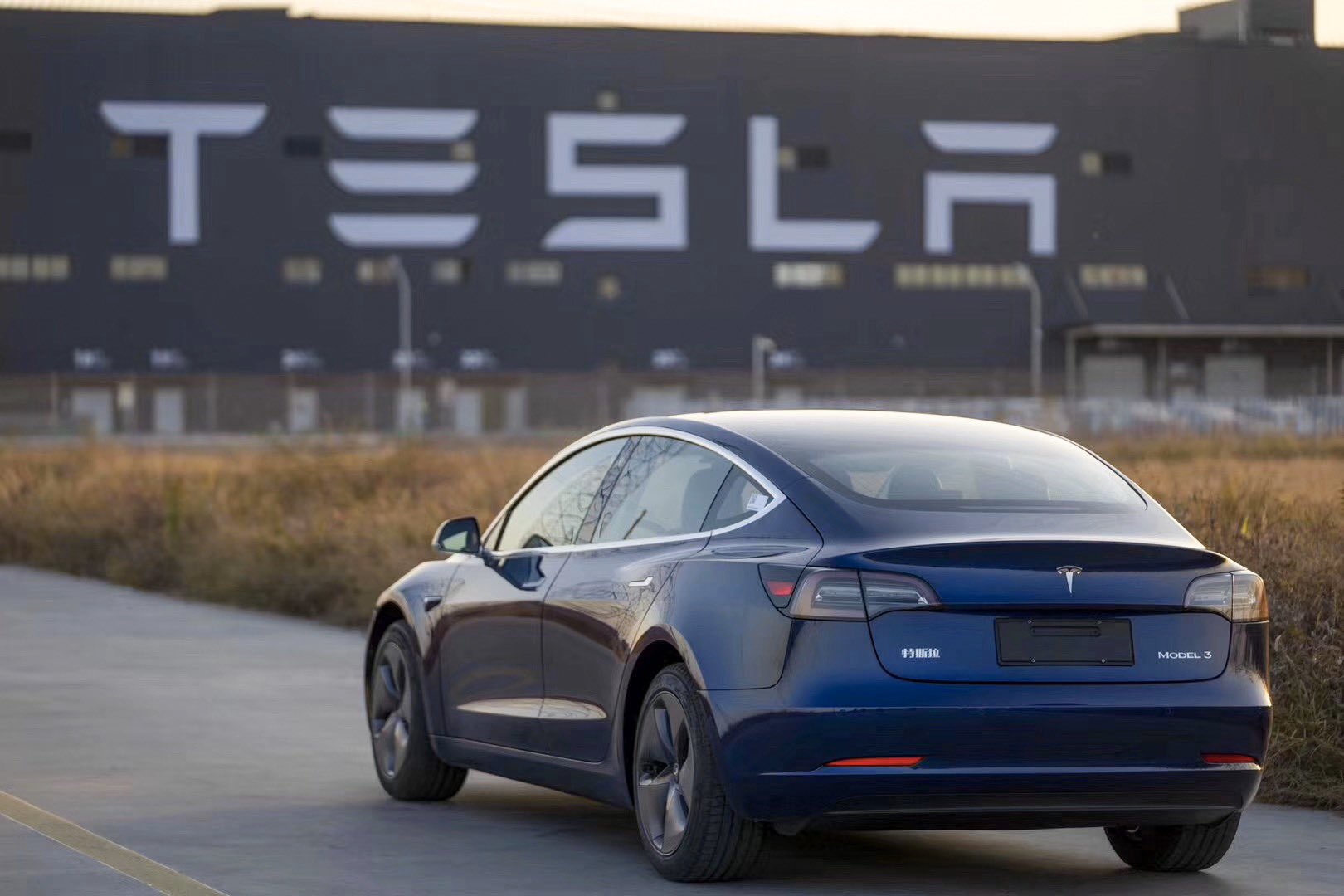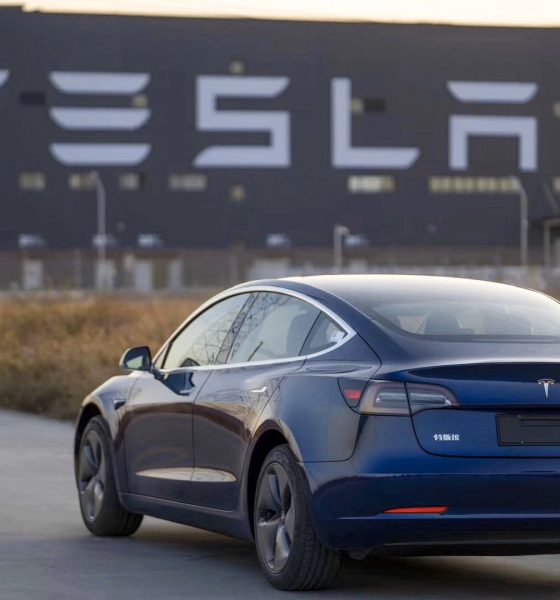

News
Tesla China pushes back MIC Model 3 deliveries amid coronavirus outbreak
As the novel coronavirus outbreak continues in China, Tesla has opted to postpone MIC Model 3 deliveries scheduled for February, at least until the situation in the country improves. The update was related by Tesla China VP for External Affairs Grace Tao Lin, who noted on Weibo that MIC Model 3 deliveries will likely be pushed back, perhaps as far back as the third quarter of 2020.
Giga Shanghai currently has a run rate of 3,000 Model 3s per week and is poised to hit an annual production rate of 150,000 vehicles. The company has also launched the Model Y program in the country. With these in mind, the recently-announced delays will likely set back the ramp of the locally-made Model 3, while potentially pushing back the Model Y program in the country.
Interestingly enough, Tesla has noted that it does not expect a big financial hit in China due to the coronavirus outbreak. This is because the MIC Model 3 only represents a small fraction of the company’s quarterly profits, according to Tesla’s finance chief Zach Kirkhorn during the company’s Q4 2019 earnings call.

Analysts currently expect markets to underperform because of the ongoing coronavirus outbreak. However, Tesla seems to be defying the odds so far. This week, the Tesla stock continued to soar, with the Silicon Valley-based electric carmaker surpassing the current valuation of Volkswagen and BMW combined on Monday. Tesla’s price per share hit past $900 and settled at $887.06 when the market closed on Tuesday
The real impact of production delays and supply chain issues might be felt soon though if the closure of factories across China will be stretched to mid-March. Automotive research firm IHS Markit estimates that carmakers may lose about 1.7 million units during the first quarter of 2020. This corresponds to a 32.3% decline from the firm’s initial estimates.
“In this scenario, we might expect the potential of a China-wide supply chain disruption caused by parts shortages from Hubei, a major component hub — and adjacent province closures for the majority of the month of February as a result,” IHS Markit wrote in a press release.
The Shanghai government has ordered the shutdown of companies in the city, including Giga Shanghai, amid the coronavirus outbreak. Government and private companies are not allowed to resume operations before Feb. 9. Prior to the suspension of work, the government has also extended the Lunar New Year holidays to help control the spread of the 2019-nCOV that started in Wuhan, a city about 9 hours away by car from Shanghai.
Tesla is not the sole automaker that is being affected by the ongoing outbreak. Hyundai, Toyota, Ford, Nissan, Volkswagen, Daimler, and Continental have also shut down their respective factories in China due to the virus.
Based on the latest updates, there are more than 24,000 people infected by the coronavirus that causes fever, serious respiratory illness, impaired liver function, and kidney failure. As of Wednesday local time, there have been 490 deaths reported in connection to the virus. The World Health Organization has declared the outbreak, which has infected people in 25 countries, a public health emergency. The United States and several countries have also implemented travel bans to and from China.
In response to the coronavirus outbreak, Tesla China has offered local customers free Supercharging for an indefinite time to make traveling easier for drivers who reside in areas affected by the outbreak.
Amid the public health scare, Tesla has continued to provide customer support through Douyin, China’s version of TikTok. Tesla sales staff from certain experience centers live-streamed tours of the Made-in-China Model 3 and entertained questions from potential buyers. The company has also posted schedules of the live streams that interested consumers can join via Douyin.
Meanwhile, Tesla owners in China united to raise 123,000 yuan or about $17,500 to purchase N95 masks, surgical masks, and sets of protective clothing that they plan to donate to different hospitals treating patients infected by the coronavirus. Tesla has also donated 5 million yuan or more than $700,000 to assist the government and other institutions involved in disease control.
The recent news from China appears to have weighed down on Tesla stock. As of writing, TSLA stock is trading

Elon Musk
Elon Musk and Tesla AI Director share insights after empty driver seat Robotaxi rides
The executives’ unoccupied tests hint at the rapid progress of Tesla’s unsupervised Robotaxi efforts.

Tesla CEO Elon Musk and AI Director Ashok Elluswamy celebrated Christmas Eve by sharing personal experiences with Robotaxi vehicles that had no safety monitor or occupant in the driver’s seat. Musk described the system’s “perfect driving” around Austin, while Elluswamy posted video from the back seat, calling it “an amazing experience.”
The executives’ unoccupied tests hint at the rapid progress of Tesla’s unsupervised Robotaxi efforts.
Elon and Ashok’s firsthand Robotaxi insights
Prior to Musk and the Tesla AI Director’s posts, sightings of unmanned Teslas navigating public roads were widely shared on social media. One such vehicle was spotted in Austin, Texas, which Elon Musk acknowleged by stating that “Testing is underway with no occupants in the car.”
Based on his Christmas Eve post, Musk seemed to have tested an unmanned Tesla himself. “A Tesla with no safety monitor in the car and me sitting in the passenger seat took me all around Austin on Sunday with perfect driving,” Musk wrote in his post.
Elluswamy responded with a 2-minute video showing himself in the rear of an unmanned Tesla. The video featured the vehicle’s empty front seats, as well as its smooth handling through real-world traffic. He captioned his video with the words, “It’s an amazing experience!”
Towards Unsupervised operations
During an xAI Hackathon earlier this month, Elon Musk mentioned that Tesla owed be removing Safety Monitors from its Robotaxis in Austin in just three weeks. “Unsupervised is pretty much solved at this point. So there will be Tesla Robotaxis operating in Austin with no one in them. Not even anyone in the passenger seat in about three weeks,” he said. Musk echoed similar estimates at the 2025 Annual Shareholder Meeting and the Q3 2025 earnings call.
Considering the insights that were posted Musk and Elluswamy, it does appear that Tesla is working hard towards operating its Robotaxis with no safety monitors. This is quite impressive considering that the service was launched just earlier this year.
Elon Musk
Starlink passes 9 million active customers just weeks after hitting 8 million
The milestone highlights the accelerating growth of Starlink, which has now been adding over 20,000 new users per day.

SpaceX’s Starlink satellite internet service has continued its rapid global expansion, surpassing 9 million active customers just weeks after crossing the 8 million mark.
The milestone highlights the accelerating growth of Starlink, which has now been adding over 20,000 new users per day.
9 million customers
In a post on X, SpaceX stated that Starlink now serves over 9 million active users across 155 countries, territories, and markets. The company reached 8 million customers in early November, meaning it added roughly 1 million subscribers in under seven weeks, or about 21,275 new users on average per day.
“Starlink is connecting more than 9M active customers with high-speed internet across 155 countries, territories, and many other markets,” Starlink wrote in a post on its official X account. SpaceX President Gwynne Shotwell also celebrated the milestone on X. “A huge thank you to all of our customers and congrats to the Starlink team for such an incredible product,” she wrote.
That growth rate reflects both rising demand for broadband in underserved regions and Starlink’s expanding satellite constellation, which now includes more than 9,000 low-Earth-orbit satellites designed to deliver high-speed, low-latency internet worldwide.
Starlink’s momentum
Starlink’s momentum has been building up. SpaceX reported 4.6 million Starlink customers in December 2024, followed by 7 million by August 2025, and 8 million customers in November. Independent data also suggests Starlink usage is rising sharply, with Cloudflare reporting that global web traffic from Starlink users more than doubled in 2025, as noted in an Insider report.
Starlink’s momentum is increasingly tied to SpaceX’s broader financial outlook. Elon Musk has said the satellite network is “by far” the company’s largest revenue driver, and reports suggest SpaceX may be positioning itself for an initial public offering as soon as next year, with valuations estimated as high as $1.5 trillion. Musk has also suggested in the past that Starlink could have its own IPO in the future.
News
NVIDIA Director of Robotics: Tesla FSD v14 is the first AI to pass the “Physical Turing Test”
After testing FSD v14, Fan stated that his experience with FSD felt magical at first, but it soon started to feel like a routine.

NVIDIA Director of Robotics Jim Fan has praised Tesla’s Full Self-Driving (Supervised) v14 as the first AI to pass what he described as a “Physical Turing Test.”
After testing FSD v14, Fan stated that his experience with FSD felt magical at first, but it soon started to feel like a routine. And just like smartphones today, removing it now would “actively hurt.”
Jim Fan’s hands-on FSD v14 impressions
Fan, a leading researcher in embodied AI who is currently solving Physical AI at NVIDIA and spearheading the company’s Project GR00T initiative, noted that he actually was late to the Tesla game. He was, however, one of the first to try out FSD v14.
“I was very late to own a Tesla but among the earliest to try out FSD v14. It’s perhaps the first time I experience an AI that passes the Physical Turing Test: after a long day at work, you press a button, lay back, and couldn’t tell if a neural net or a human drove you home,” Fan wrote in a post on X.
Fan added: “Despite knowing exactly how robot learning works, I still find it magical watching the steering wheel turn by itself. First it feels surreal, next it becomes routine. Then, like the smartphone, taking it away actively hurts. This is how humanity gets rewired and glued to god-like technologies.”
The Physical Turing Test
The original Turing Test was conceived by Alan Turing in 1950, and it was aimed at determining if a machine could exhibit behavior that is equivalent to or indistinguishable from a human. By focusing on text-based conversations, the original Turing Test set a high bar for natural language processing and machine learning.
This test has been passed by today’s large language models. However, the capability to converse in a humanlike manner is a completely different challenge from performing real-world problem-solving or physical interactions. Thus, Fan introduced the Physical Turing Test, which challenges AI systems to demonstrate intelligence through physical actions.
Based on Fan’s comments, Tesla has demonstrated these intelligent physical actions with FSD v14. Elon Musk agreed with the NVIDIA executive, stating in a post on X that with FSD v14, “you can sense the sentience maturing.” Musk also praised Tesla AI, calling it the best “real-world AI” today.








